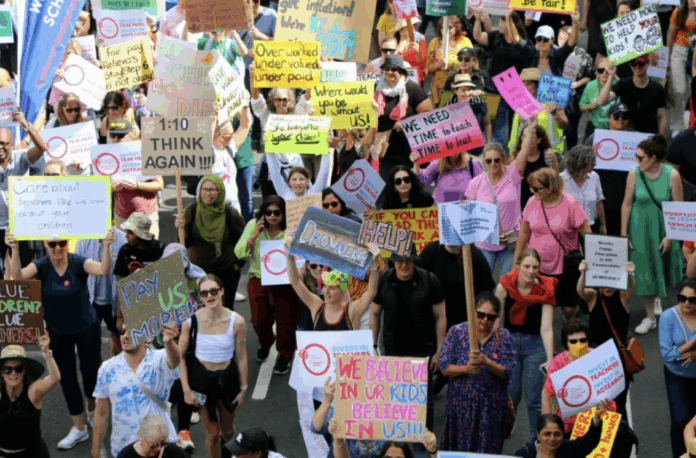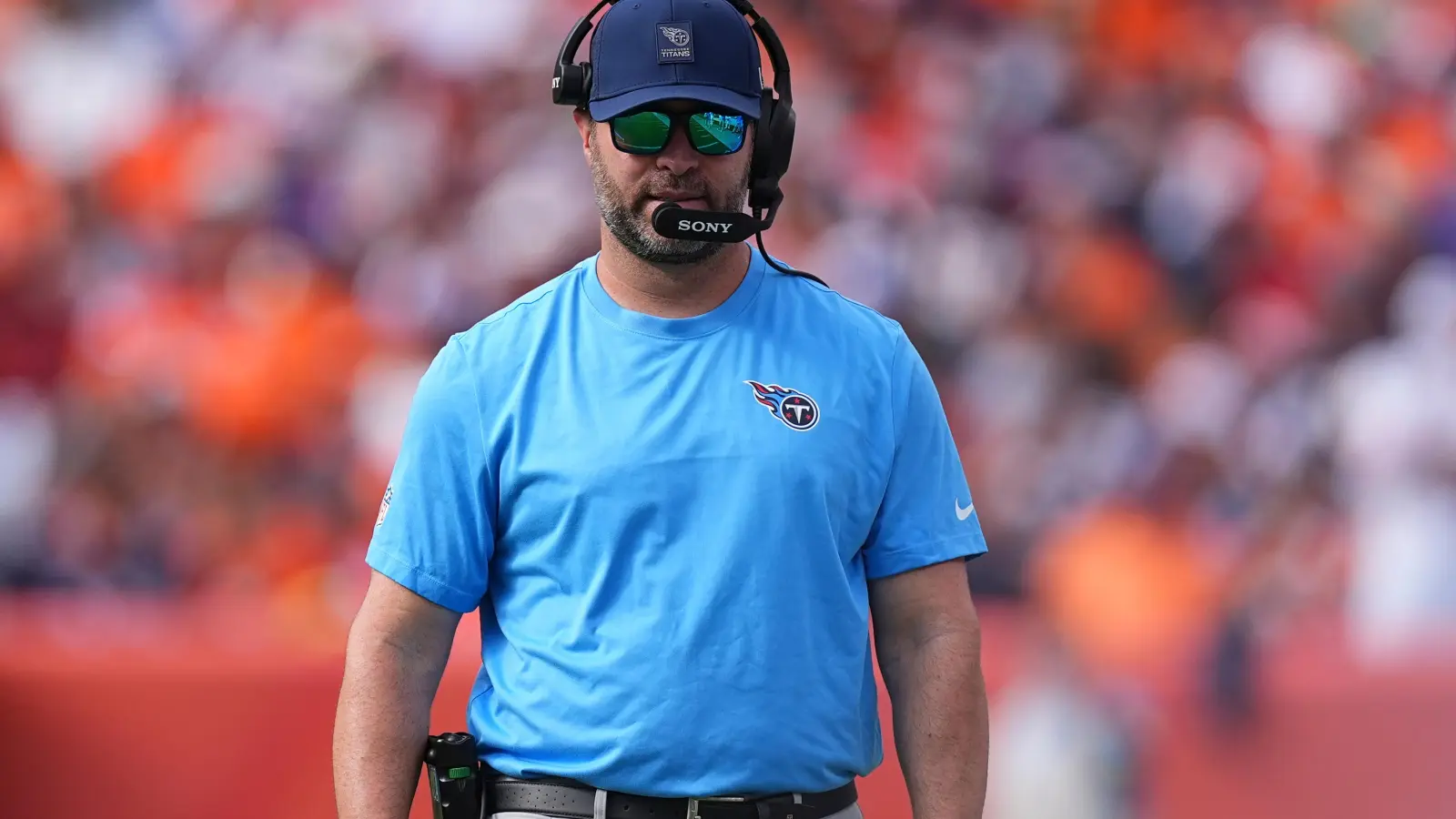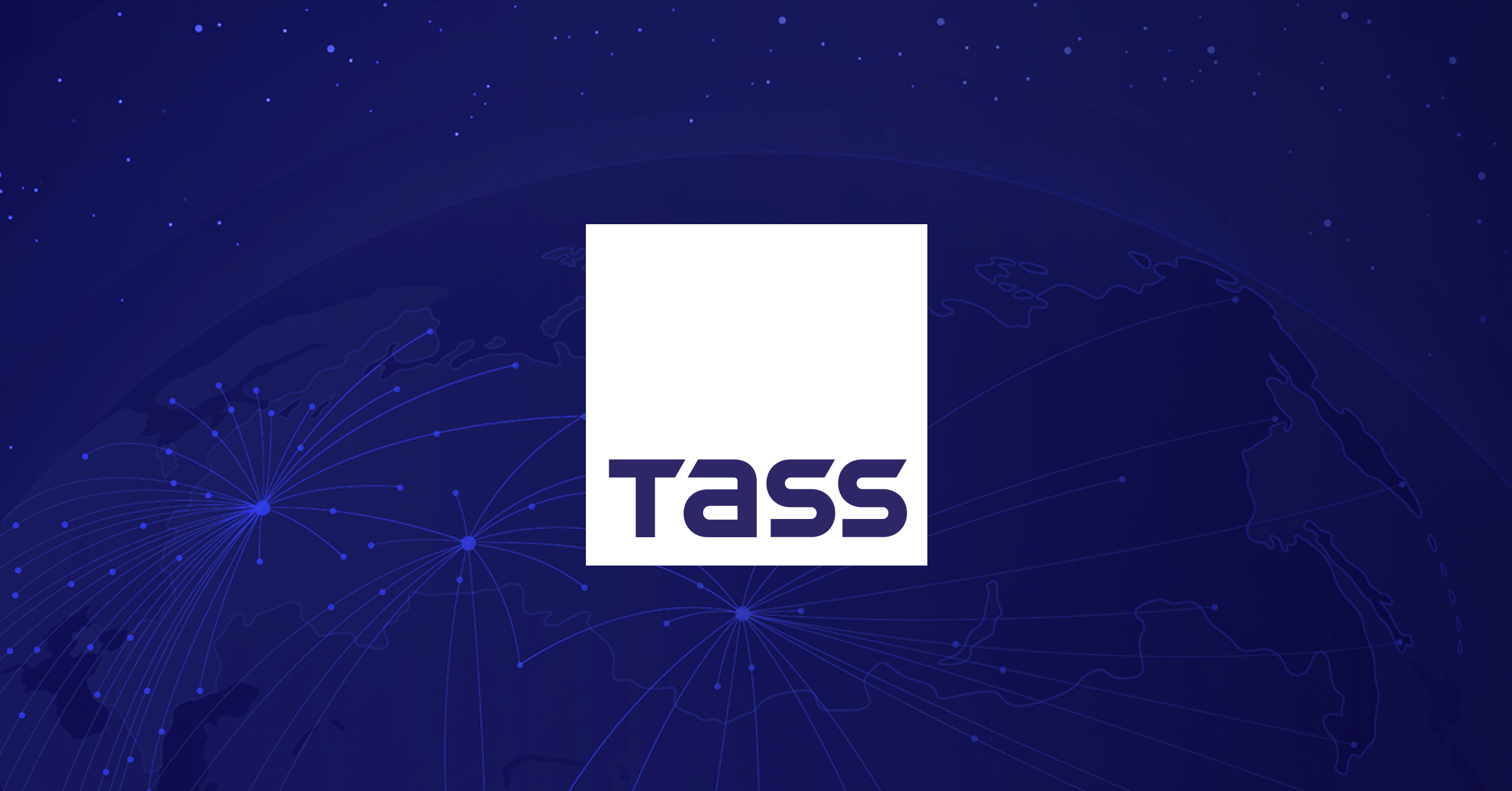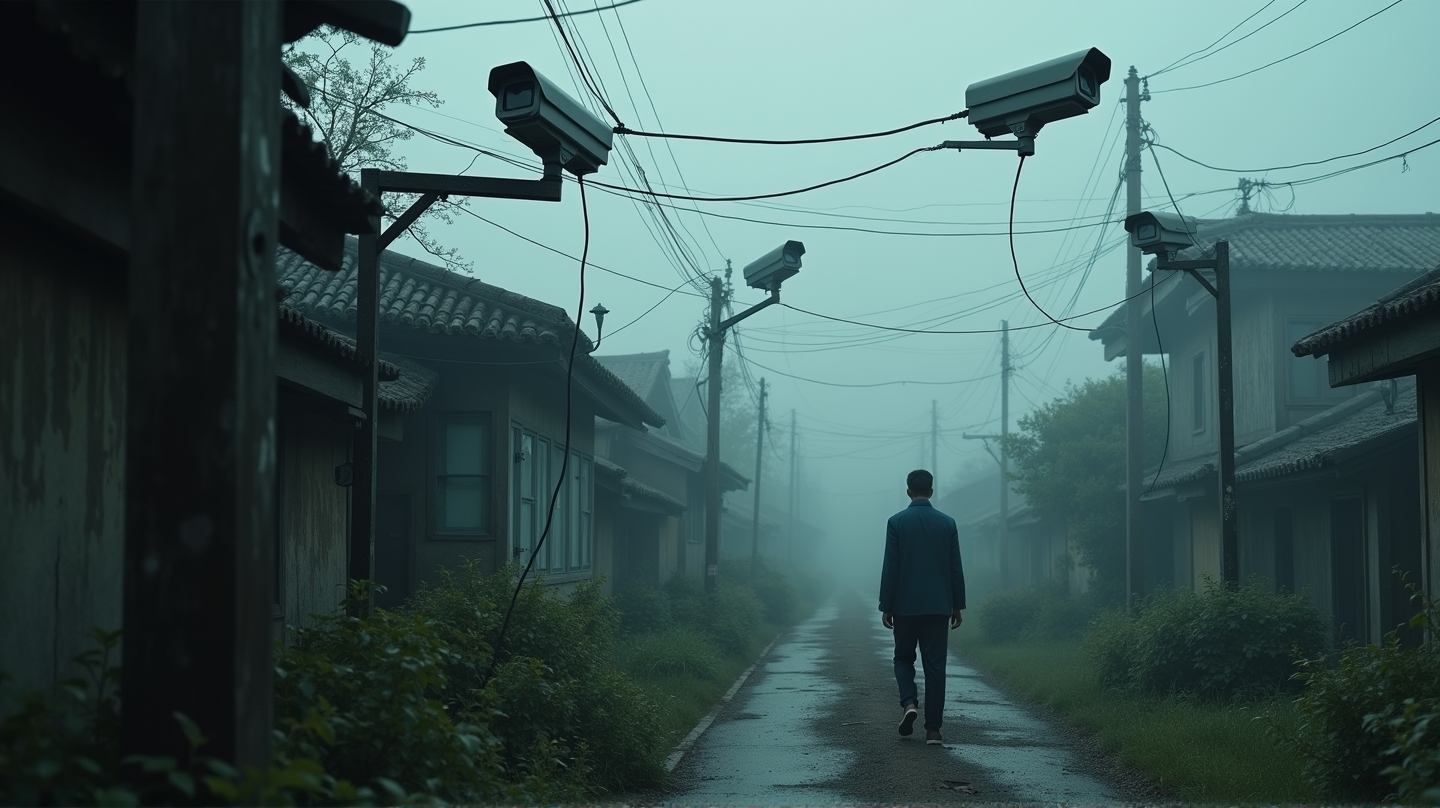By Allan Alach,Erica Stanford
Copyright thedailyblog

In a recent ballot, primary teachers, primary principals, support staff, kaiārahi i te reo, therapists and Ministry of Education field staff and support workers have all voted to take strike action together on 23 October.
From information I’ve gleaned, here are my opinions of the background to this decision.
There are a couple of noteworthy aspects to this momentous decision. First, it is relatively rare for primary teachers to be forced to go on strike to defend their contract negotiations. Over my 40 year career I would think we went out on strike maybe six times, so the fact that another strike is scheduled is a very strong indicator of the impasse between the New Zealand Educational Institute (NZEI) – the union representing all the sectors mentioned above – and the Ministry of Education (MOE).
My conjecture is that while in the past there were substantial disagreements between these two parties, underpinning negotiations was an atmosphere of good faith bargaining, where each side was committed to finding common ground. This time, however, I gather that this atmosphere is absent from the Ministry who seem to be working off a ‘take it or leave it’ approach.
While the MOE are in the hot seat with these negotiations, we know where their instructions originate, and it is also very significant that for the first time in my memory the Public Services Commissioner has actively joined in – I was under the impression that his role should be non-partisan but maybe I’m wrong. Certainly I do not remember the Public Services Commissioner being involved in the past, slagging teachers off publicly and also writing to school Boards of Trustees expressing his opinion. This is a concern.
The second noteworthy feature is that it’s not just primary teachers and principals who are going to strike, which in my recollection is a rarity and is again an indication of the deadlock. It is clear that the MOE position is not negotiable,
So what are the NZEI wanting to negotiate for their members? Number one is a pay increase to meet the increased cost of living, which as you will know, is substantial, both with inflationary costs, on top of government imposed costs. I’m sure you will agree that is a reasonable claim.
So how did the MOE respond? Their initial offer was for a 1% pay rise each year for the next three years. That is outrageous, as it would mean effective pay cuts for all teachers at a time when many are looking across the ditch at the much better pay rates and better working conditions than provided here.
On top of that, the MOE put in a counter claim to double the number of call back days during term breaks to 20. I’ll discuss that later in the article as there’s more to this than is apparent, however if implemented it would increase the teacher workload for a measly 1% per year increase, I.e., more work for virtually the same money. Sources tell me that this call back extension was due to a direct intervention by Erica Stanford, the Minister of Education. Make of that what you will.
Following the NZEI’s refusal of that offer, I understand the MOE came back with an offer, for a slightly reduced term of contract, that varied depending on experience level – teachers were offered a 1.43% to 2.52% pay increase in the first year and between 1.3% and 2.1% in the second year. Better but still well below the cost of living increases.
I have no idea what the thinking was behind that, what the MOE hoped to achieve, or whether they actually expected the teachers to agree to it. They’re ‘taking the piss’ seems to be the appropriate response.
The second leg of the primary teachers claim was for improved learning support in the classroom. While the ideal would be the UK system of a teaching assistant in every classroom, any step to increase teacher aide assistance would be a step forward. Over the past years problems with child behaviour and children needing learning support have markedly increased. This was very obvious even when I was still working and I gather it has gotten much worse since then.
The demands placed by these children on classroom teachers, and on schools as a whole, are intense and often to the point where teachers are struggling to cope and many start to consider leaving the profession altogether. The job has to be doable and sadly this is increasingly not the case.
Non-teachers have no idea what it feels like to be battling extreme behaviour in a classroom. I can tell you it is hell. The support offered by the MOE to schools is farcical.
We can speculate why the situation has gotten so much worse, all due to issues outside of the schools, but that doesn’t help teachers or schools at all.
So how did the MOE address this claim? They didn’t. Clearly either they have no idea what life is really like in classrooms (fits in with my anti MOE prejudice!) or they don’t care. Take your pick.
In the end though, while the teachers bear the burden of managing these children, it is all children who suffer. A teacher who is at their wit’s end managing difficult learning and behaviour issues can’t give the rest of the class the depth of attention they deserve.
The NZEI claim also sought to address the pay equity issues that were summarily removed when the government changed the legislation just before the budget. Primary teaching is a predominantly female workforce, as I’m sure you are aware, and so pay equity is a major issue. While at the time the government stated that any equity disparities could be addressed in contract negotiation, this supposes that the MOE would be receptive to discussing this. Nope.
Another perennial leg of the NZEI claim was to address pay parity issues with their secondary colleagues. This is a battle that has gone on for decades. I recall first discussing this at a NZEI meeting in Tokoroa in the late 1970s and I well remember the battle NZEI had, and won, in the mid 1990s, one time when teachers did go on strike. The result substantially closed the gap but disparities still remain. Primary teachers are still in the situation where their work is seen as less valuable as their secondary colleagues and so are not recompensed accordingly.
This time the claim was for the value of monetary units, awarded to teachers who take on extra responsibilities, to be increased to match those of secondary schools, and for the allocation of units to each school to be based on the same formula, so the ratio of the number of units to school size will be the same across both primary and secondary schools. Do I need to tell you the MOE response?
The final leg of the NZEI claim was a request to be able to work with the MOE to develop ways to enhance the incorporation of all aspects of Ti Tiriti in primary schools – after all as I detailed in previous articles this is a requirement defined in legislation. Given the anti-treaty ideology of this government, you won’t be surprised to know that this was categorically refused, even though there would have been minimal cost to the MOE.
As we’ve previously speculated the government will likely introduce legislation to do away with all treaty requirements before too long, and indeed Bevan Holloway has found evidence of this, to be discussed in my next article.
So that is the nuts and bolts of the primary teachers’ claim. The primary principals’ claim is a separate issue, and won’t be finalised until the teachers’ claim has been been settled. However given the outcome of the teachers’ claim, we can infer that the MOE response has been equally dismissive.
Which brings us to the support staff claim – non-teaching staff, such as office staff and teachers aides and librarians, for example (caretakers have their own contracts). These underpaid people are absolutely essential to a school’s operation, so much so that while schools can get by when principals and teachers are absent, life rapidly gets difficult when support staff are away (I used to joke that it was obvious who the essential people in schools are).
So naturally the MOE wanted to address this by making a generous offer? Sure. How about 0% pay rise for the first year and 1% for the second year? When that was rejected a subsequent offer was made: 60 cents an hour in the first year followed by 15 cents in the second year and 25 cents in the third year. Wow, that will help pay the bills…
What is significant is that all these positions are funded out of school’s operations grant, not by the MOE, and so any increases impact on funding to run the school. This adds extra burdens to schools as the government has very much restricted increases to operational grants, meaning that schools too are running behind the rising costs such as electricity. This is another example of the government’s attitude towards the state schooling sector. This isn’t new, as past National led governments also underfunded schools.
I don’t have information about the other groups who are also striking but again, we can guess.
Given that the PPTA have been forced to implement rolling strikes over the secondary school contract negotiations, it is very apparent, in spite of any statements to the contrary, that this government does not value state schools and teachers.
It’s not a lack of money, just look at how much has been shovelled to Seymour’s charter schools. There’s enough money to set aside $70 million to attract overseas artists to come to New Zealand (especially Auckland) to perform. There’s enough money to buy very expensive military toys in order to keep Donald Trump happy. There’s enough money to give tax cuts to the wealthy including landlords.
But there’s not enough money to fairly pay teachers, nurses, doctors, firefighters and so on, nor is there enough money to adequately resource the schools, hospitals, medical centres, and fire stations.
Priorities?
Earlier I mentioned Erica Sanford’s desire to increase the number of teacher call back days during term breaks. Right wing politicians have targeted teachers’ so-called holidays for decades, and this needs to be unpicked.
Running a successful classroom, even back in the days when there weren’t the same issues with behaviour and learning needs, is a very intense and tiring experience. Teachers need to be operating at high levels of awareness all the time in order to provide the best learning opportunities, and to monitor what is happening in the classroom. This, as I know from my own experience, is exhausting.
Sure I know there are many people who out of ignorance, think teachers have it easy. Reminds me of a frequent comment I used to get at school camps, when parent helpers would say, after seeing what I and the other teachers were doing, “I used to think you guys had it easy but I changed my mind.’ Might look easy from the outside but there’s far more going on than is apparent.
It’s not just the time in front of the class either, as there are hours of unseen work before and after school, in the evenings and in the weekends, to set up the classroom and to prepare for all the learning experiences. Sure it looks easy, after all the New Zealand Initiative has as one of its aims allowing non-qualified people to teach.
Yeah, right. I’d love to take one of the people who believe this, push them into a classroom of typical kids, shut the door and let them get on with it. Reminds me of some bloke who thought he could be prime minister because he used to run an airline.
By term’s end teachers are burnt out and they spend most of the break recovering – I used to find that it took until Monday or Tuesday of the second week to feel ‘normal’, round about the time I’d start work on preparing for the coming term.
The only real break (holiday) teachers get is four weeks over the summer when they’ve recovered from the year’s work and before they start on preparing for the coming year.
This recovery time is vital and politicians risk destroying the teacher workforce by meddling with it – the rate of teacher breakdowns and of those leaving the profession will increase substantially.
And for all those who are going to leap into the comments to disparage this, the old question is still very valid – if the job is so easy, why aren’t you all doing it?



